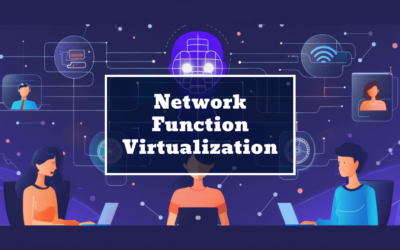Demystifying Cloud Computing: A Beginner’s Guide

Introduction
In the rapidly evolving world of technology, cloud computing has emerged as a game-changing solution for businesses of all sizes. It offers a flexible, scalable, and cost-effective way to access and manage data, applications, and services. However, for beginners, the concept of cloud computing can be quite overwhelming. In this beginner’s guide, we will demystify cloud computing and explain its key components, benefits, and various deployment models. By the end of this article, you will have a clear understanding of cloud computing and how it can benefit your business.
Cloud Computing: What is it?
Cloud computing is the delivery of computing services over the internet, allowing users to access and use resources such as storage, processing power, and software applications on-demand. Instead of relying on local servers or personal devices, cloud computing enables users to access these resources from anywhere, anytime, if they have an internet connection.
Cloud Service Providers and Infrastructure:
Cloud service providers are companies that offer cloud computing services to businesses and individuals. These providers build and maintain the infrastructure required to deliver these services. Cloud infrastructure typically consists of a network of servers, storage systems, and other hardware components that work together to provide computing resources to users.
Cloud Deployment Models:
There are different cloud deployment models to cater to diverse business needs:
- Public Cloud: In a public cloud, the computing resources are shared among multiple organizations or individuals. It is managed and operated by a third-party cloud service provider. Public clouds offer cost-effective solutions as users only pay for the resources they consume.
- Private Cloud: A private cloud is dedicated to a single organization, either managed internally or by a third-party provider. It offers enhanced security and control over data and resources. Private clouds are suitable for businesses with strict compliance and security requirements.
- Hybrid Cloud: Hybrid cloud solutions combine the best of both public and private clouds. They allow organizations to leverage the scalability and cost-effectiveness of public clouds while keeping sensitive data and critical applications in a private cloud. Hybrid clouds offer flexibility and enable businesses to optimize their IT infrastructure based on specific needs.
Cloud Security and Governance:
Cloud security is a top concern for businesses considering cloud computing. Cloud service providers implement robust security measures to protect data and ensure privacy. They employ encryption, access controls, and regular security audits to safeguard sensitive information.
Cloud governance refers to the policies and procedures that organizations implement to manage their cloud resources effectively. It includes monitoring resource usage, setting user access controls, and ensuring compliance with regulatory requirements.
Cloud Storage Options and Networking:
Cloud storage provides a scalable and reliable solution for storing and accessing data. Cloud service providers offer different storage options, including object storage, block storage, and file storage, to suit various data requirements. Object storage is ideal for storing unstructured data such as images, videos, and documents, while block storage is suitable for databases and applications that require high-performance storage.
Cloud networking enables the seamless connection between different cloud resources and services. It allows organizations to create virtual networks, establish secure connections, and optimize the flow of data within their cloud infrastructure.
Cloud Cost Optimization and Scalability:
One of the significant advantages of cloud computing is its cost optimization capabilities. With cloud services, businesses can scale their resources up or down based on demand, eliminating the need for expensive hardware investments. Cloud providers offer flexible pricing models, allowing users to pay only for the resources they consume.
Cloud scalability refers to the ability to increase or decrease computing resources quickly. It enables businesses to handle spikes in traffic, accommodate growth, and optimize resource utilization. Cloud providers offer auto-scaling features that automatically adjust resources based on predefined thresholds.
Cloud Migration Strategies and Multi-Cloud Management:
Cloud migration involves moving applications, data, and other business elements from on-premises infrastructure to the cloud. It requires careful planning and execution to ensure a smooth transition. Organizations can adopt different migration strategies, such as the “lift and shift” approach or re-architecting applications for the cloud.
Managing multiple cloud environments can be challenging for organizations using services from different cloud providers. Multi-cloud management tools help streamline operations by providing a centralized platform to monitor, manage, and optimize resources across multiple clouds.
Serverless Computing and Performance Optimization:
Serverless computing is a cloud computing model where developers can focus on writing code without the need to manage underlying infrastructure. In serverless architectures, cloud service providers handle the allocation of resources, scaling, and maintenance, allowing developers to focus solely on application development.
Cloud performance optimization involves fine-tuning cloud resources to achieve optimal performance. It includes optimizing network configurations, choosing the right instance types, and leveraging caching and content delivery networks (CDNs) to minimize latency and improve response times.
Conclusion:
Cloud computing has revolutionized the IT landscape, offering businesses of all sizes access to scalable, cost-effective, and flexible computing resources. In this beginner’s guide, we have demystified cloud computing and discussed its key components, deployment models, security measures, storage options, networking capabilities, cost optimization strategies, scalability features, migration strategies, multi-cloud management, serverless computing, and performance optimization techniques.
By harnessing the power of cloud computing, businesses can enhance their agility, reduce costs, improve security, and unlock new opportunities for growth. As technology continues to evolve, understanding and leveraging cloud computing will become increasingly crucial for businesses to stay competitive in the digital era.
Are you looking for any IT Services such as Web design and Development, Mobile App Development, Digital Marketing Services and more. Connect Stridefuture Technology, which helps to meet your requirements.
{StrideFuture Technology, a full-service company specializing in Software Solutions and Consultancy services. We specialize in Personal, Business, IT Services, Web design and Development, Mobile App Development, Digital Marketing Services, and much more you can dream Virtually with us! Reach out for more service at StrideFuture Technology.}









